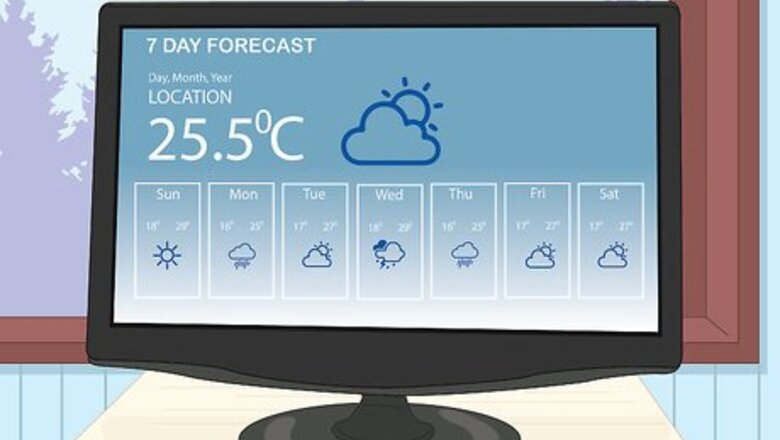
views
Reading the Forecast
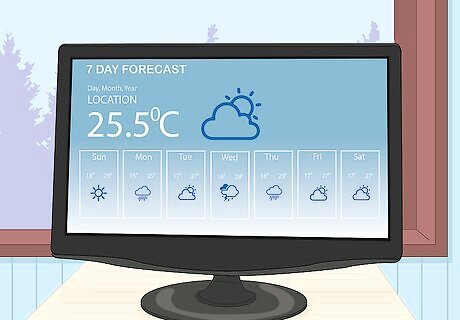
Check the local weather forecast. The first place to start is with your local weather. Turn on the local forecast or go online and look up the day’s temperature. Be aware of any inclement weather and listen especially for excessive heat or cold warnings. Take note of the temperature if you have an outdoor thermometer. This will give you some idea of the conditions outside. But keep in mind that it doesn’t give the whole story: thermometers record the air temperature. They do not register wind chill or heat index, which make it feel colder or warmer than the actual air temperature.
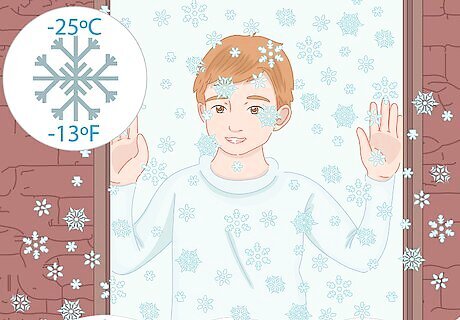
Keep children indoors in very cold conditions. Extreme cold can lead to hypothermia, when the body’s natural temperature gets too low, or frostbite. The Canadian Pediatric Society recommends that children play inside in temperatures under -25ºC/-13ºF However, this is the absolute limit – when the skin begins to freeze in only a few minutes. The state of Oklahoma recommends that children play inside when wind chills fall below 10ºF. However, kids need to come inside for breaks every 20 to 30 minutes when the wind chill is below 32ºF. The guidelines mentioned above are only examples and are not universal. What may be considered "very cold" in one climate may be "mild" in another climate. For example, a temperature of 50 degrees Fahrenheit will be very cold in places such as Florida but is considered to be mild weather in a colder climate. In the United States, the National Weather Service will issue a wind chill advisory or warning when wind chills are low enough to pose a threat to human life. If your area is under such a warning, you should definitely keep your kids inside.
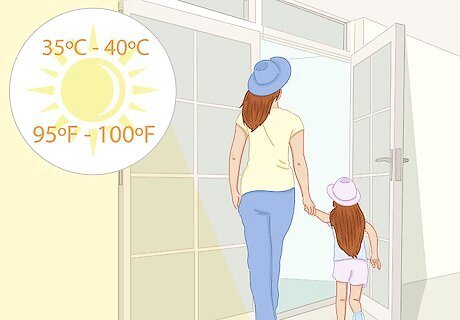
Keep children indoors in very hot temperatures. Very hot conditions can put children at risk of heatstroke, heat exhaustion, burns from hot object like playground equipment, sunburn, and excessive thirst, especially during active play. Have kids stay indoors when temperatures are over 35ºC - 40ºC/95ºF - 100ºF and wait for it to cool down. If your kids are active, or if you live in a warmer climate, it is a good idea to limit play or exercise to cooler periods in the morning or evening. Avoid playing in hot weather between 10am - 4pm. The National Weather Service issues excessive heat warning and advisories whenever it is hot enough to be hazardous to human health. You should keep your kids inside if your area is under such a warning.
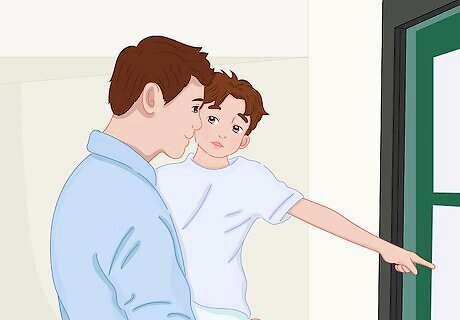
Follow your school’s guidelines. Many schools have rules on what temperatures are suitable for outdoor play, and hold indoor recess if it becomes either too hot or too cold. Learn what rules your school has and try following them at home; if outdoor recess is cancelled, you’ll know the temperature is dangerous.
Calculating for Wind Chill or Heat Index

Check the weather for the “apparent temperature.” Knowing when to keep your children inside is made harder by the fact that the air temperature does not always reflect how hot or cold it feels outdoors. This is because other factors affect heat and cold, especially wind chill and humidity. The number to know, then, is what is called the “apparent temperature.” This is how hot or cold is actually feels to you outdoors after you account for the wind and the humidity. Wind chill is the apparent temperature in cold weather, the perceived decrease in air temperature felt when wind is felt on exposed skin. Meteorologists calculate wind chill by using advanced formulas. However, you can find charts and calculators online that will do the math for you. All you need to know is the air temperature and wind speed. The chart will then give you the wind chill factor for the day. Heat index is the apparent temperature for hot weather. The heat index is what the temperature feels like to the human body when you account for the humidity in the air. This too is calculated with complex formulas, but you can find charts online that will do the math for you. All you have to know is the air temperature and the relative humidity for the day.
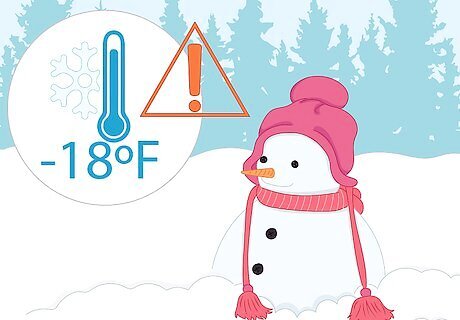
Know the danger zones for wind chill. According to the National Weather Service, frost bite can occur in a matter of minutes once wind chills go below -18ºF. Following their calculation, however, you’ll want to keep your kids indoors well before that. For example, when the air temperature is 30ºF, a brisk wind of even 10 miles per hour lowers the wind chill factor to about 21ºF, which is about the limit for safe play. An air temp of 25ºF and a light wind of 5 mph make for a wind chill of 19 ºF.
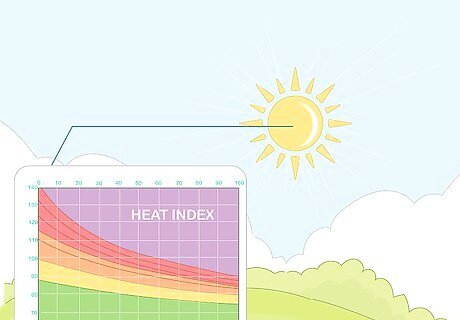
Know the danger zones for heat index. Like wind chill, be aware of what levels of apparent hot temperatures are safe and what are unsafe. Consider the following: an air temperature of 90ºF will feel like 97ºF when the relative humidity is at 70%. An air temperature of 95ºF will feel like 114ºF with a relative humidity of 80%. These apparent temperatures can be very unsafe. Keep in mind sunlight, as well. Full exposure to the sun can increase heat index factors by up to 15ºF. A 97ºF heat index will then feel fully like 112ºF
Keeping Kids at a Comfortable Temperature
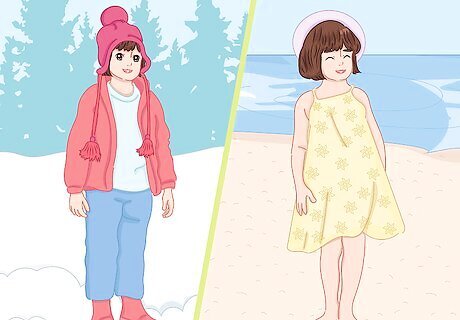
Dress kids appropriately. You should plan accordingly when the weather is either very cold or very hot. Dress your kids for their activities – this means a coat or snowsuit, mittens, scarf, hat, and boots for snow play, layered clothing for intermediate temperatures, and light clothing when it's hot. The key to dressing for cold weather is layering. Active kids will get hot outdoors, even when it’s cold. The problem is that they will sweat, and this dampness can be uncomfortable and actually make them lose body heat more quickly – this is a risk for hypothermia. Dress them in layers so that, for example, they can remove their heavy coat if they overheat. Try three layers: an inner level that keeps dabs moisture and keeps it away from most of the body (polyester and modern materials are good; cotton is not). A middle layer is for insulation. This can consist of wool or fleece and even be in several layers. Finally, an outer layer is for the usual wind, water, and ice clothing – coat with hood, hat, snow pants, etc.
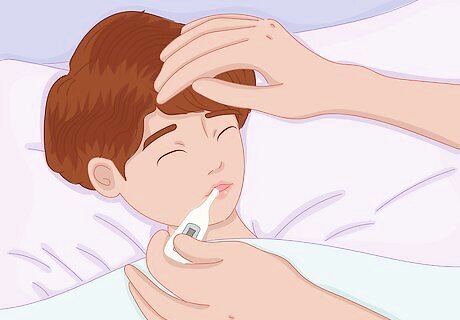
Watch for signs of excessive cold or heat. A child who is too hot or too cold will show signs to look for. If you recognize any of these signs, take steps to get him inside to either cool down or warm up. If your child's symptoms do not go away within a few minutes, then call your child's doctor. Call 911 or emergency services if symptoms are severe. Exposure to excessive heat can lead to muscle cramps, for example, and also fainting. These may be signs of heat exhaustion or heat stroke. Dizziness, weakness, nausea, or lack of coordination are indications that something is seriously wrong. Dark colored urine is a sign that the child is dehydrated. Children who are too cold may or may not say anything. Believe a child if she says she is too cold. Shivering, for example, though minor, is the first symptom of hypothermia. More serious signs include dizziness, hunger, nausea, fatigue, rapid breathing, and lack of coordination.

Keep kids well hydrated. One of the best things you can do to avoid heat-related illnesses in children is to make sure that they drink enough fluids. As said above, proper clothing will control over-heating, which will in turn lessen sweating and loss of fluids. Make sure you wear clothing appropriate to the environment. Clothes that are too thick or too warm can quickly cause a person to become overheated. Children sweat less and have less evaporative cooling than adults. Let them exercise at their preferred level; do not urge them to exercise harder or play a strenuous sport in hot conditions. Don’t rely on your children telling you that they are thirst as a guide to their hydration. Thirst is actually a poor indicator. Have water and other beverages available to kids in hot and cold weather. In times of high fluid loss or significant sweating, be sure to replace your child's electrolytes as well by giving your child a sports drink or an oral electrolyte solution like Pedialyte.
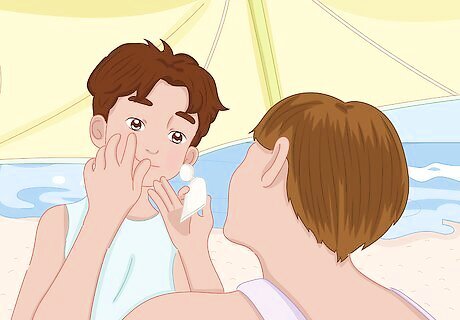
Apply sunscreen and avoid direct sun. Avoiding the sun is not just about keeping kids cool. It is also about keeping their skin safe from harmful UV rays and avoiding sunburn, which can be particularly bad for young children. Have your kids apply sunscreen all year round, even in winter, as one way to protect them from the sun. Use a screen with an SPF of at least 30. Avoid the strongest rays of the day – these occur at the same times of peak temperatures, between 10 am and 3 pm. Also, utilize shade strategically, either natural shade of trees of with an umbrella.

















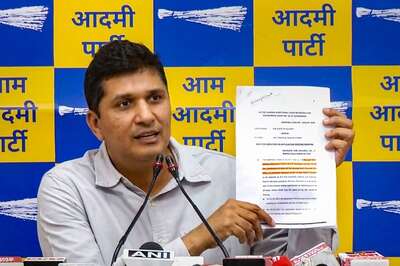


Comments
0 comment